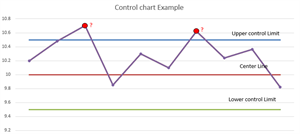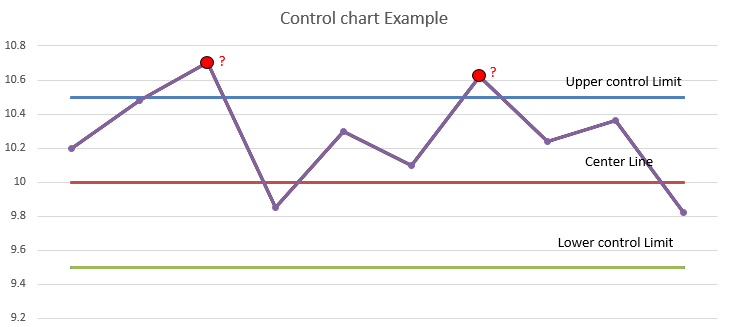What is Control Chart

A Control Chart is a statistical tool that is used to monitor a process or system over time and detect any changes in its performance. It is a graphical representation of the process data, with the average value and the upper and lower control limits plotted on the chart.

The pros of using a Control Chart include:
-
It provides a visual representation of the process data, which helps in identifying any patterns or trends in the data.
-
It helps in detecting any changes in the process performance, which may indicate the need for corrective action.
-
It provides a tool for continuous improvement, by allowing the process to be monitored and adjusted as necessary.
-
It helps in reducing variability and improving quality, by identifying sources of variation in the process.
The cons of using a Control Chart include:
-
It can be difficult to interpret the chart without a basic understanding of statistical concepts and methods.
-
It may not be suitable for all types of processes or systems, as some processes may not have a natural mean or may be too complex to monitor using a control chart.
-
It requires a significant amount of data to be collected and analyzed, which may be time-consuming and costly.
-
It may not be effective in detecting small changes in the process performance, as the control limits may be too wide to detect subtle variations.